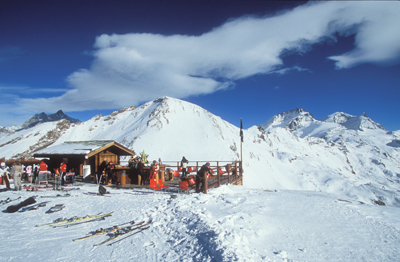 Exposure meters are designed to give correct readings for average scenes that are assumed to be 18% grey. This works well in most instances, but not where a scene is predominantly very dark or very light. Snow is highly reflective and in direct midday sunlight has a glaring pure white surface. It is consequently underexposed by reflected light meters. The more snow cover there is in the scene, the greater the under exposure.
Exposure meters are designed to give correct readings for average scenes that are assumed to be 18% grey. This works well in most instances, but not where a scene is predominantly very dark or very light. Snow is highly reflective and in direct midday sunlight has a glaring pure white surface. It is consequently underexposed by reflected light meters. The more snow cover there is in the scene, the greater the under exposure.
Correcting for this problem with an autoexposure camera involves estimating the extent of the underexposure. With colour negative film simply overexpose by one stop and ask the processing lab to print to achieve the correct result. When using slide film, life is rather more difficult. Overexposure by up to two stops can be required but precise compensation levels are difficult to gauge. The best approach is to bracket around the best available estimate in one third or half-stop increments. With digital cameras exposure measurement is essentially the same, but it is easy to see from the histogram whether the distribution of tones is acceptable.
When the sun is overhead the form and texture of snow is particularly difficult to record. Contrast levels are high and the small differences in the whiteness of the snow surface are lost if the exposure is not ideal. More satisfactory results may be obtained early or late in the day when and the elevation of the sun is lower, contrast is reduced and shadows are more prevalent. In diffused light shadows cast on snow tend to record rather blue, so it can be worth using an 81A or 81B filter to correct this.
Low temperatures are an ever-present factor in snow-covered environments. Alkaline batteries are prone to failure and the metal surfaces of cameras and tripods can freeze onto exposed skin.